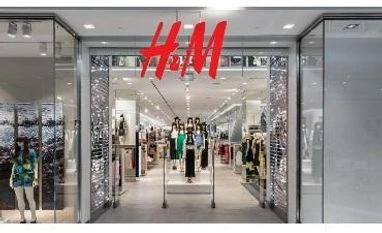Fashion retailer H&M said on Wednesday it would open far fewer stores in 2018 as it responds to the shift to shopping online and announced plans to launch a new outlet to sell external brands alongside its own ranges.
Following decades of rapid expansion, the world's second-biggest clothes group after Zara owner Inditex has struggled to respond to the growth of ecommerce. Its image was dented further last month by an ad slammed by many as racist.
H&M, in which the founding Persson family owns a 33 per cent stake, reported an unchanged dividend but said it might give shareholders the chance to reinvest dividends by issuing new shares to help finance investments.
H&M shares, already down more than a third over the last year, fell 5.8 per cent by 0905 GMT, making them the biggest losers on a flat European retail sector index.
H&M said it planned a net addition of about 220 stores in 2018, compared with 388 in 2017. Breaking down that figure, H&M plans to open about 390 new stores and close about 170, entering Uruguay and Ukraine for the first time.
"The scale of the reduction will surprise some today. And it will leave the bears questioning why H&M still enjoys a 'growth stock' rating," wrote Morgan Stanley analyst Geoff Ruddell and Amy Curry, who rate H&M "underweight".
The analysts noted that H&M had finished the year with net debt on its balance sheet rather than net cash for the first time in more than 20 years, with cashflow in the fiscal fourth quarter hurt by another increase in inventory.
SALES, PROFITS FALL
Pretax profit in the three months through November, H&M's fiscal fourth quarter, fell 34 per cent to 4.9 billion Swedish crowns ($625 million), better than the mean forecast in a Reuters poll of analysts for 4.72 billion.
H&M's gross profit margin for the financial year to November 30 fell to 54 per cent from 55.2 per cent a year earlier, in contrast to the Inditex gross profit margin which slipped only slightly to 57.4 percent for the nine months to October 31.
Inditex said sales at its more than 7,500 stores and online rose 13 percent at constant exchange rates between Nov. 1 and Dec. 11, as shoppers snapped up items such as oversized sweaters and puffer parkas from new collections.
H&M said it expects sales between Dec. 1 and Jan. 31 to increase by just 1 percent in local currencies, after a fall of 2 percent in the September to November quarter.
Inditex has consistently outperformed its Swedish rival in recent years, helped by having its manufacturing bases close to its distribution centre in Spain so it can get new designs to its stores within weeks and better manage online sales.
"The industry changes are challenging everyone and this will continue in 2018, Chief Executive Karl-Johan Persson said in a statement, adding that H&M does not expect to reach a target of local-currency sales growth of 10-15 percent this year.
Persson, the grandson of Erling Persson who founded H&M in 1947, said the company was investing in analytics and technology to help make its supply chain faster and more flexible.
H&M, which has launched a number of higher-end brands in recent years to broaden its customer base, said it would launch "Afound" in 2018, offering budget products from external brands as well as its own labels. There will be a store in Stockholm as well as online sales.
It also said it would start selling the H&M and H&M Home brands on Chinese ecommerce platform Tmall in March and said it would launch online stores in four more markets during the financial year, including India.
Unlock 30+ premium stories daily hand-picked by our editors, across devices on browser and app.
Pick your 5 favourite companies, get a daily email with all news updates on them.
Full access to our intuitive epaper - clip, save, share articles from any device; newspaper archives from 2006.
Preferential invites to Business Standard events.
Curated newsletters on markets, personal finance, policy & politics, start-ups, technology, and more.
)